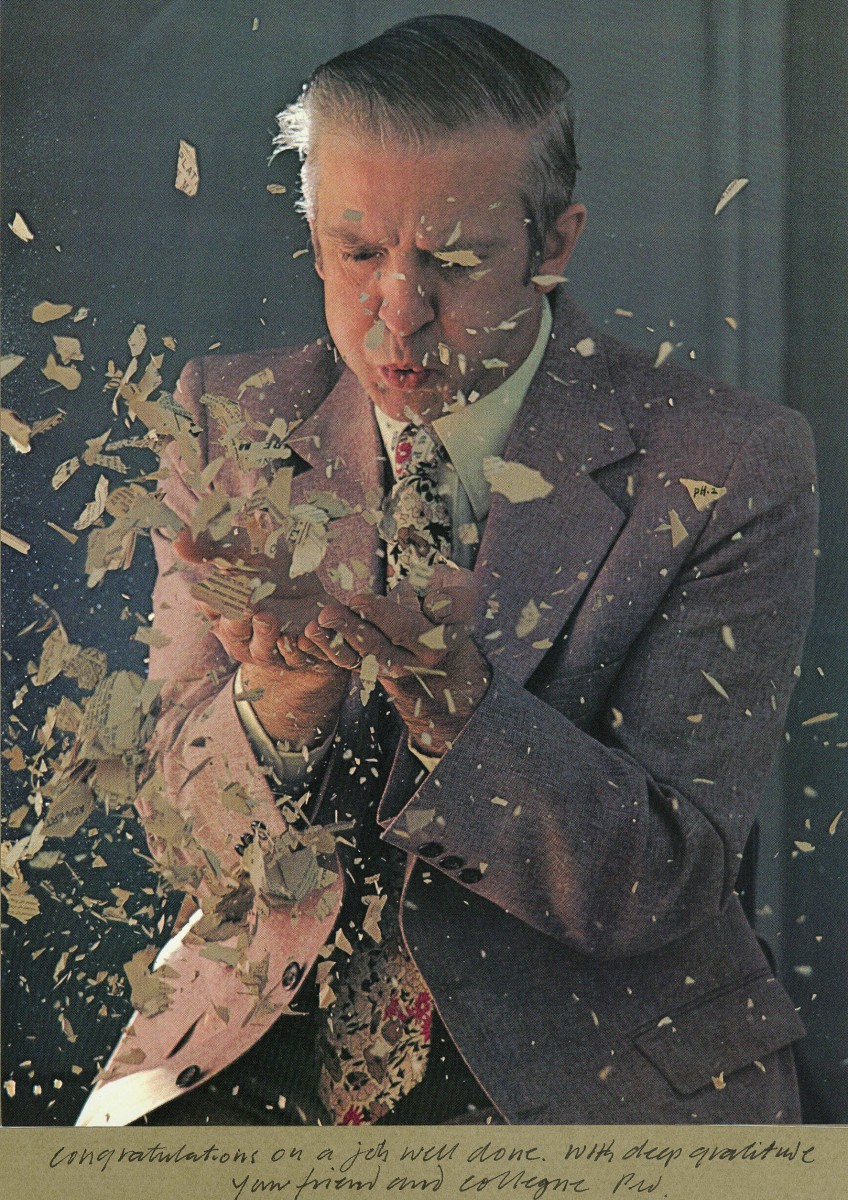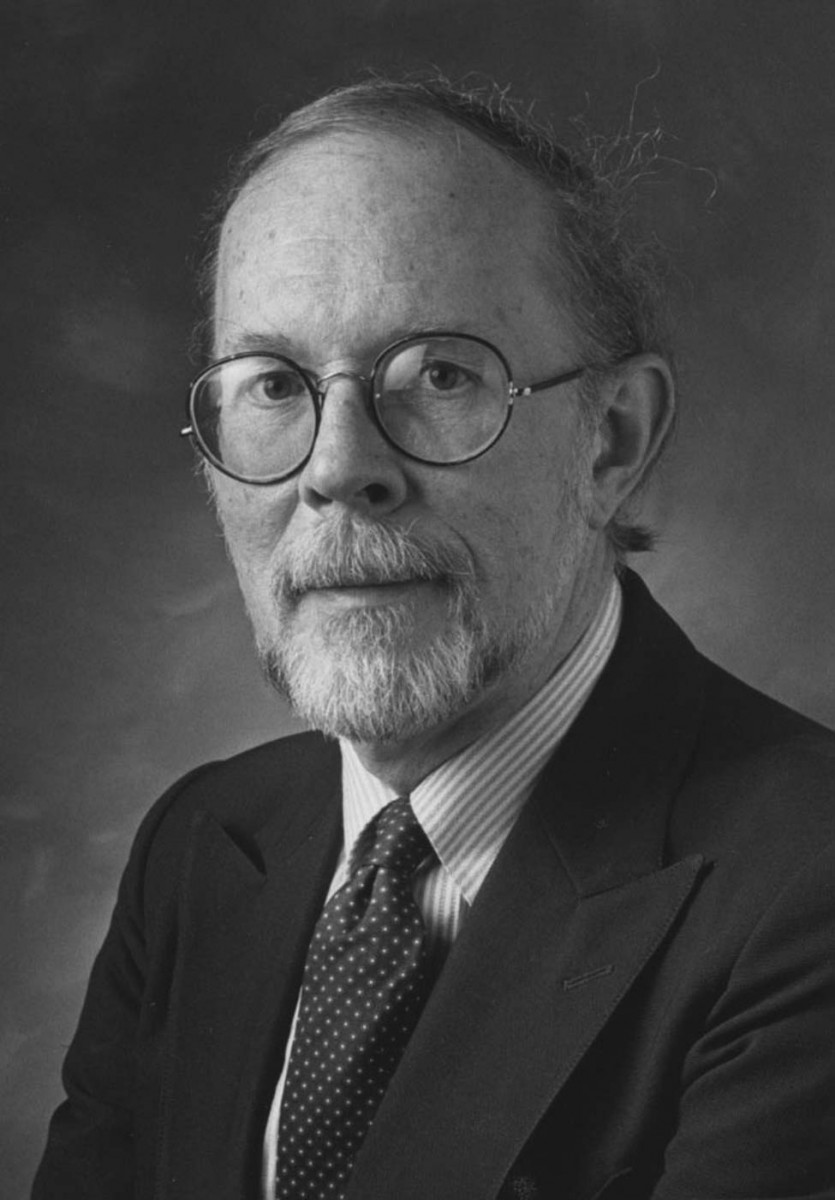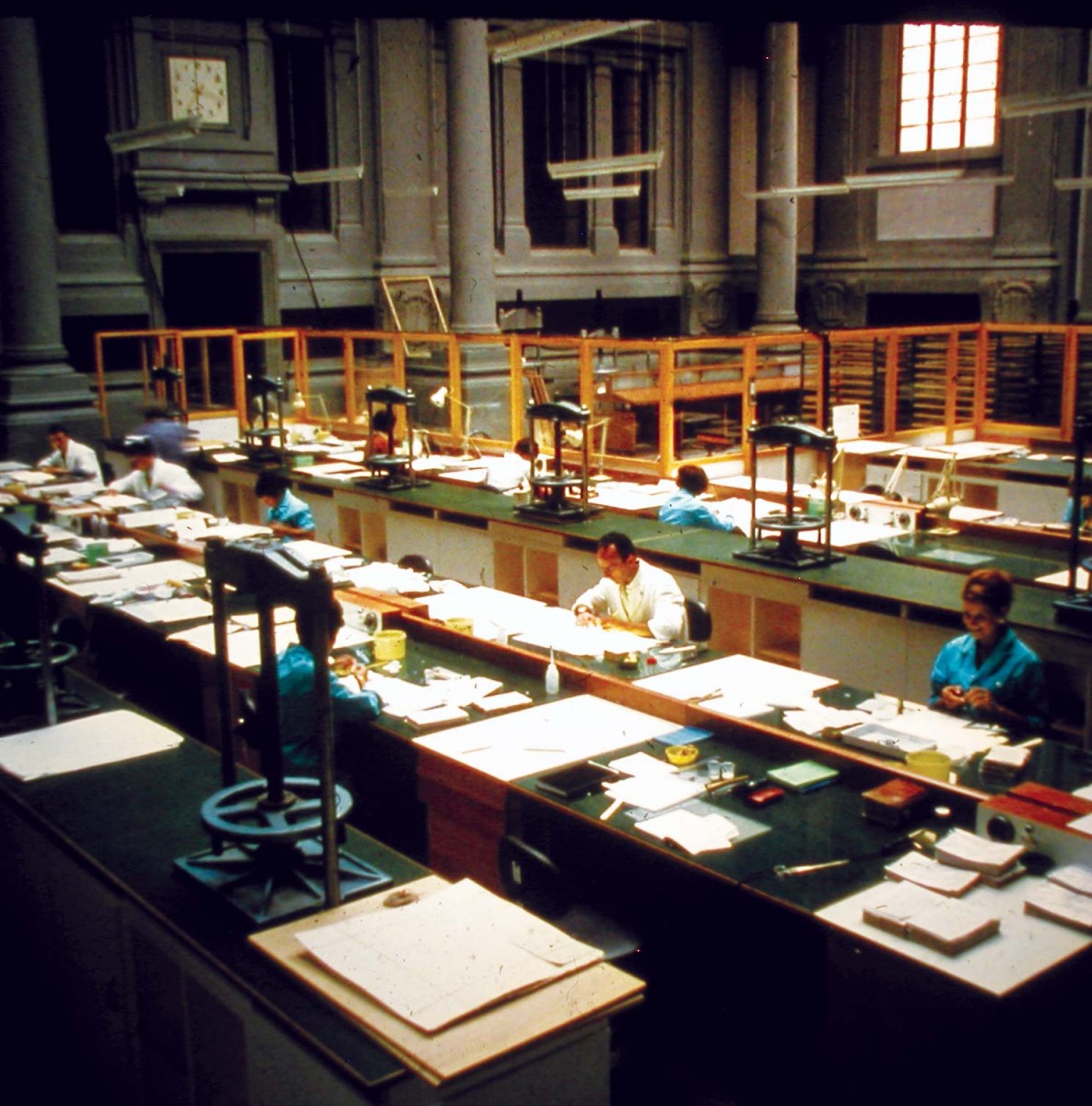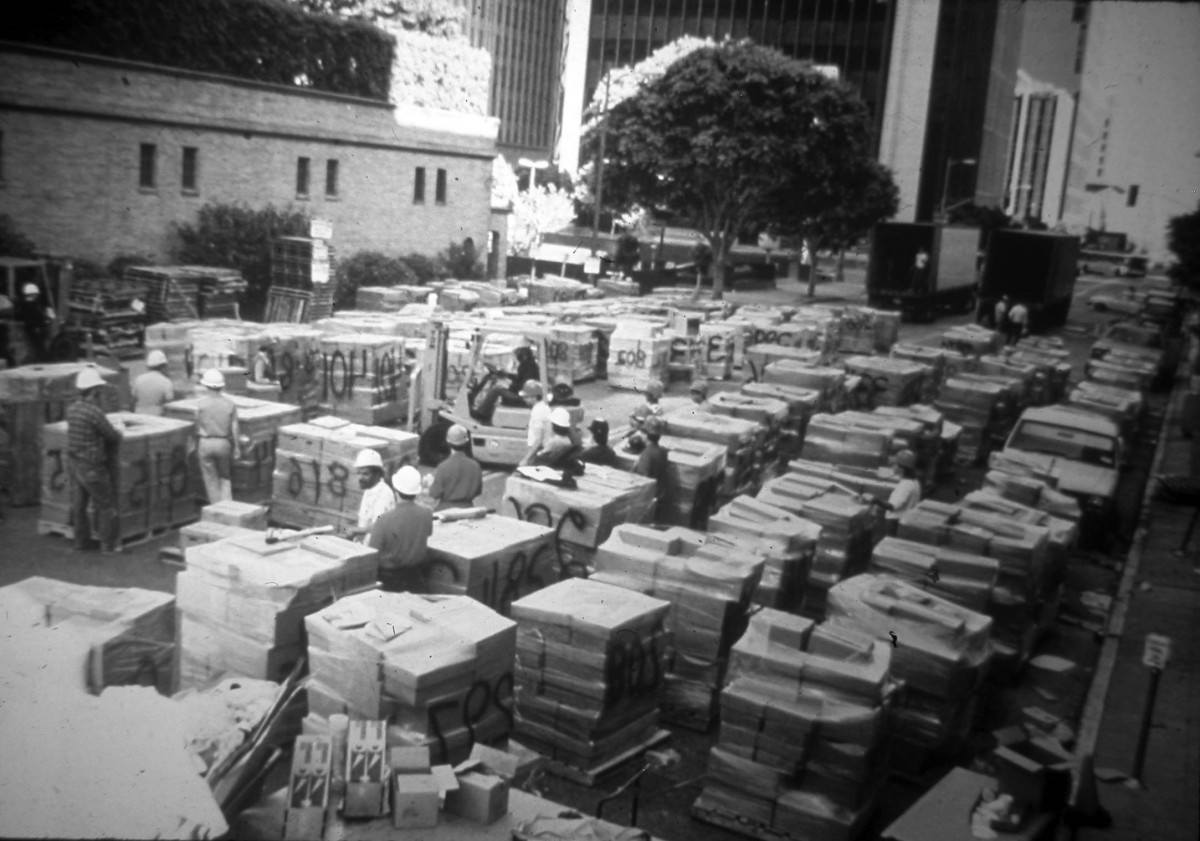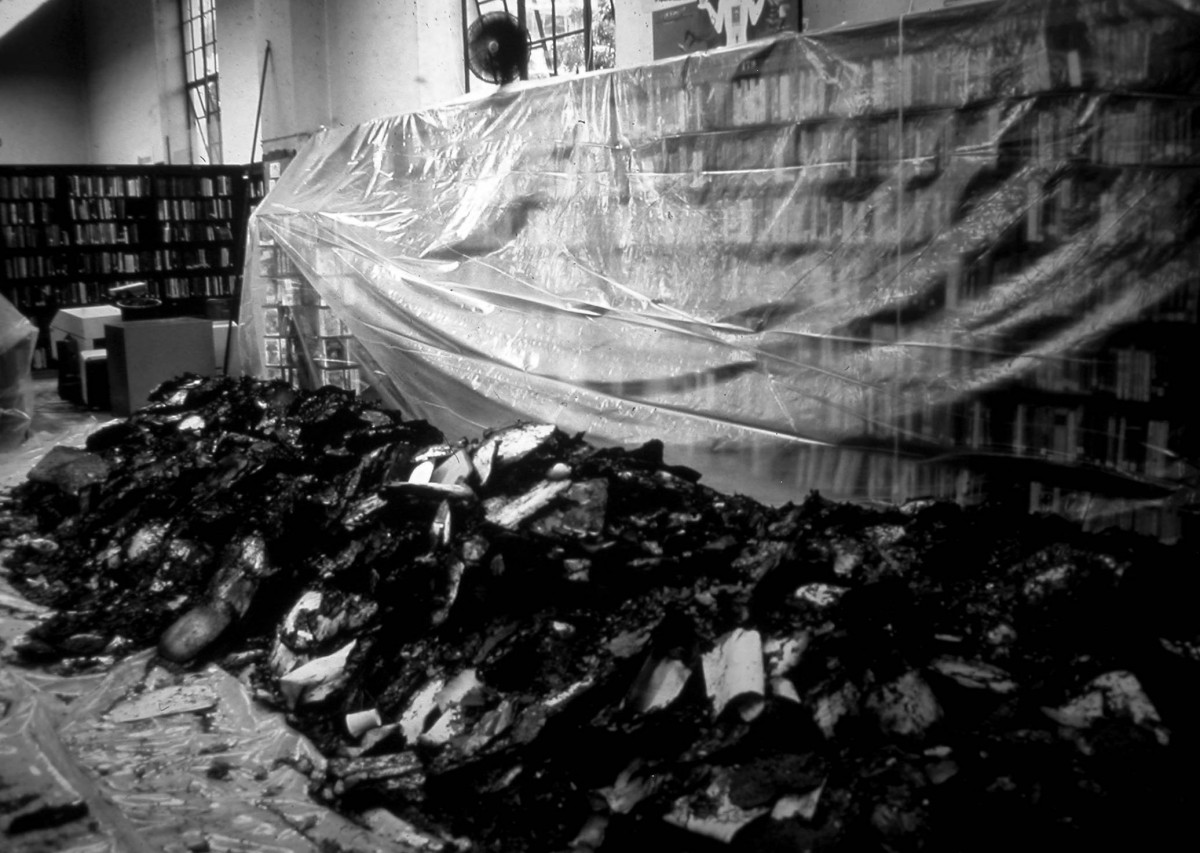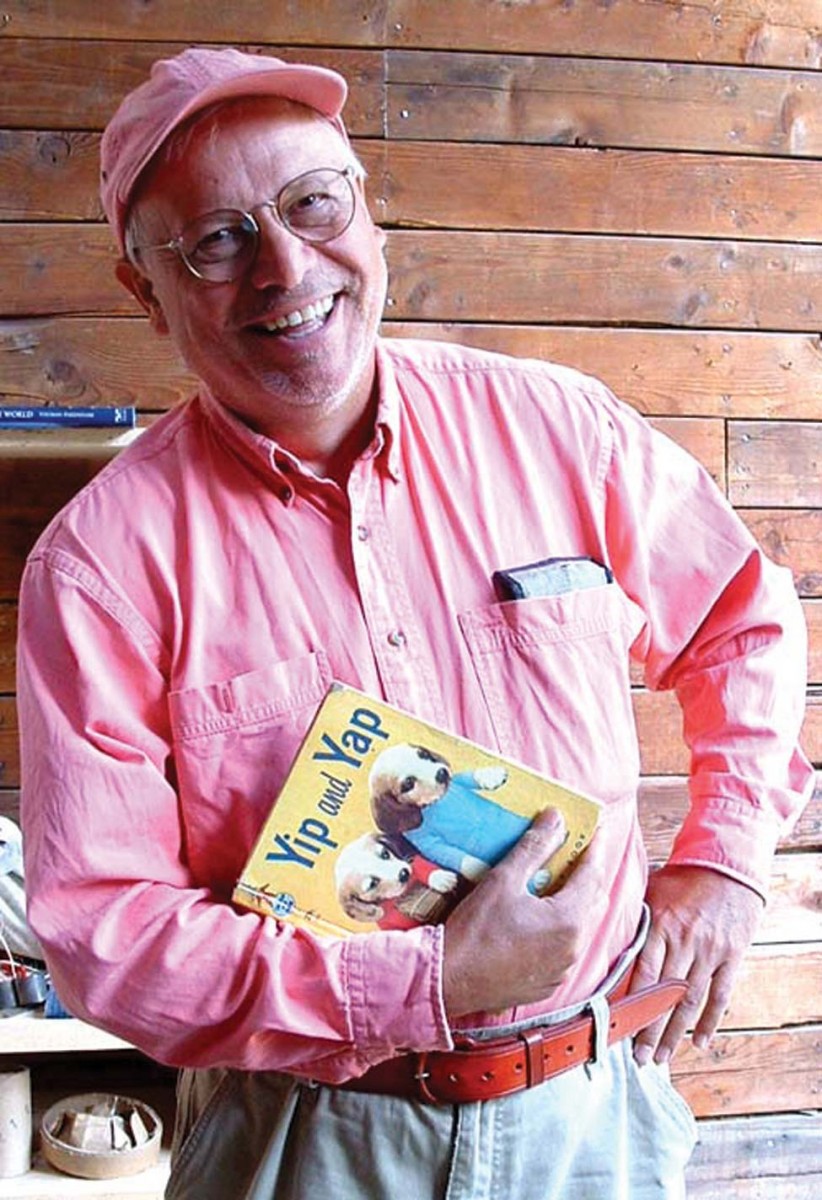Thirty Years of Milestones in Book Conservation
by Don Etherington
This article is based on remarks presented at the 2006 Guild of Book Workers Standards of Excellence Seminar, celebrating the Guild's centennial, and is meant to represent the state of the Guild and the book arts at that time.
The centennial gathering of the Guild gave us the opportunity to reminisce about the past and celebrate the present. It is difficult to discuss the past thirty years without appearing to name-drop. In fact, the paces that follow could be filled with nothing but a list of names. In lieu of that, I’d like to begin by dedicating this text to the late Peter Waters and Paul Banks, two men who had tremendous influence in the development of the fields of book conservation and library preservation in the United States. It is almost impossible to separate the roles played by library preservationists and book conservators. Indeed, in England, the title of book conservator did not come into being until the 1960s; the term “restorer” was used instead. I understand, however, that the term “conservator” came into usage in the United States somewhat earlier.
In 1964 and 1965, Cooperstown, NY, played host to what can be considered the first book conservation workshops in the United States. These were hosted by the New York State Historical Society as part of a program that included both paper and book conservation. The book conservation instructors were Harold Tribolet, from the Lakeside Press in Chicago, and Carolyn Horton, of Carolyn Horton and Associates. Although the workshops were only offered for two summers, they were to be the beginning of a much larger movement in the field.
The November 1966 flooding of Florence, Italy, had a huge impact on the book conservation and library preservation professions, especially within the United States. The Bibliotheca Nazionale suffered tremendous damage, with over 300,000 water- and oil- sodden books, and the ensuing recovery effort of those materials was of vital importance. This number represented a large portion of the reference and special collections, with many of the damaged materials being one of a kind. The recovery effort was directed by a team from England, led by Peter Waters and the conservation staff of the British Museum. Team members included Roger Powell, Sandy Cockerell, Tony Cains, Chris Clarkson, me, and others. The team was supported by funds from the Committee for the Restoration of Italian Art.
The damage done to the reference and special collections during the flood as well as the massive recovery efforts were most likely the impetus behind the United States Library of Congress’s establishment of a completely new program aimed at preserving their own collections. This program was begun under the leadership of Frazer Poole, the newly appointed director of the preservation directorate at the Library of Congress. Peter Waters was then invited to lead the new restoration office with me as the training officer. Chris Clarkson followed a year later to assist with the special collections materials. Immediately after the office was established, a number of young people were hired from a very large pool of interested and talented applicants. Among them were Tom Albro, Linda Ogden, Linda Blazer, Glen Ruzicka, and Norvell Jones.
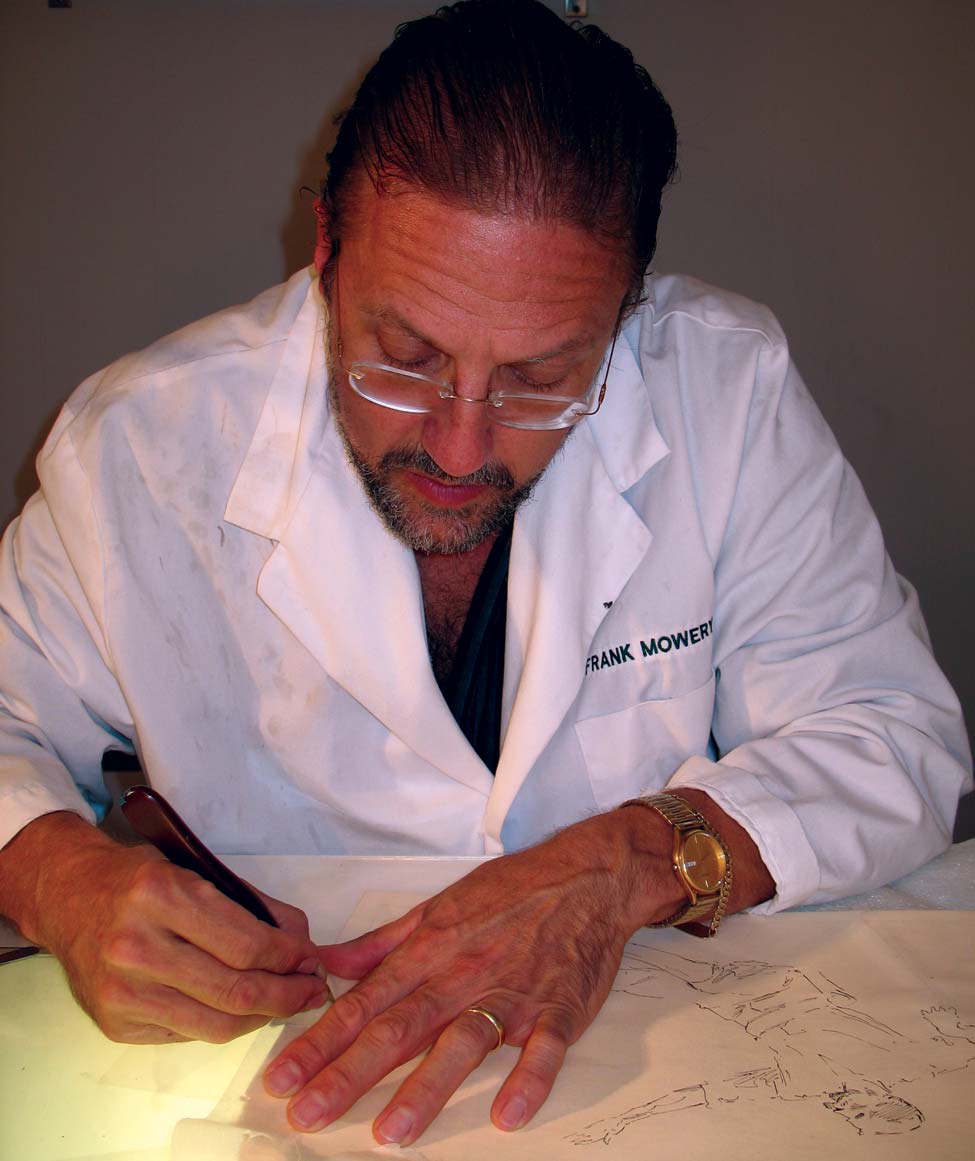
Figure 5: Frank Mowery, Head of Conservation, working at the Folger Shakespeare Library, Washington, DC.
Programs and standards were being established outside of the Library of Congress as well: the Newberry Library in Chicago, Yale University, and the New York Public Library were just a few of the institutions that established programs in the late sixties and early seventies. The Newberry was one of the only libraries to create a funding policy requiring that a fixed percentage of its purchasing budget be spent on preservation activities. Under the direction of Paul Banks, the Newberry’s conservation lab was able to offer training and experience to many interested conservators, including Sherelyn Ogden, Norvell Jones, Barclay Ogden, and Merrily Smith. In 1970, Johannes Hytoft expanded the Folger Shakespeare Library’s book repair program, begun in 1932, into a conservation lab. In 1977, Frank Mowery assumed command of the lab and has become one of the foremost conservators in the nation. The Folger Shakespeare Library has also developed a very active intern program that attracts conservators from all over the world. The New York Public Library established its conservation division in 1972, with Johns Hopkins University following in 1975. The Hopkins program was unique in that John Dean established a five-year apprenticeship program there.
The New England Document Conservation Center (NEDCC), the first major cooperative book and archive regional program, opened its doors in 1973 under the directorship of George Cunha. George had previously been the Conservator of the Boston Aethenaeum Library, where he wrote the two-volume work entitled Conservation of Library Materials: A Manual and Bibliography on the Care, Repair and Restoration of Library Materials, the first edition of which was published by Scarecrow Press in 1971. He was a tireless proponent for library preservation and gave many speeches around the country to generate interest in this subject. In that same, albeit more restrained, vein, Peter Waters and I gave many workshops in various parts of the country. The ones at the University of California at Santa Cruz were perhaps more memorable.
In 1985 John Dean established a new preservation program at Cornell University. Since that time, John has raised over $15 million in grant funds for its programs—a major success story if ever there was one. John’s work helping underdeveloped countries in their library preservation programs is legendary.
Towards the end of the 1970s conservators were distinguishing themselves a little more from the library preservationists by organizing conferences specifically directed at the growing number of book and paper conservation professionals. There was a seminar in November of 1979 entitled Fine Binding in the Twentieth Century, sponsored by the Hunt Botanical Institute Library; one hundred fifty bookbinders, conservators, and curators attended. The Cambridge International Conference of Library and Archives Materials was sponsored by the Society of American Archivists (SAA) and the International Institute for Conservation (IIC) in September 1980; over 460 book, manuscript, and paper conservators attended.
Publications started to appear around this time, however, directed at both the conservation and preservation communities—Abbey Newsletter in 1975 and Conservation Administration News in 1979, for example. The Book Arts Press (BAP), begun at Columbia University in 1972 by Terry Belanger, also proved an exception to this separation. The purpose of the press was to serve as a place where subjects integral to both fields could be studied. In 1992 BAP and its creator moved to the University of Virginia, and then in 1993 a separation occurred between the courses and the publications offered through the press. Publications continued under the BAP name, while courses, consistently taught by highly respected book conservators and rare book librarians, were offered through the Rare Book School. As of this conference, the Rare Book School has three locations in two countries with another to follow in the coming year.
A number of disasters have overtaken the library and archives communities during the past thirty years. In addition to the Florence flood there was the flood at the Corning Museum in New York, which resulted in thousands of books being damaged. A massive fire broke out at the St. Louis Records Center, followed by the Temple University Law Library fire, capped by the arson fire at the Los Angeles Public Library. The earthquake that did untold damage to Stanford University’s Green Library must also be mentioned.
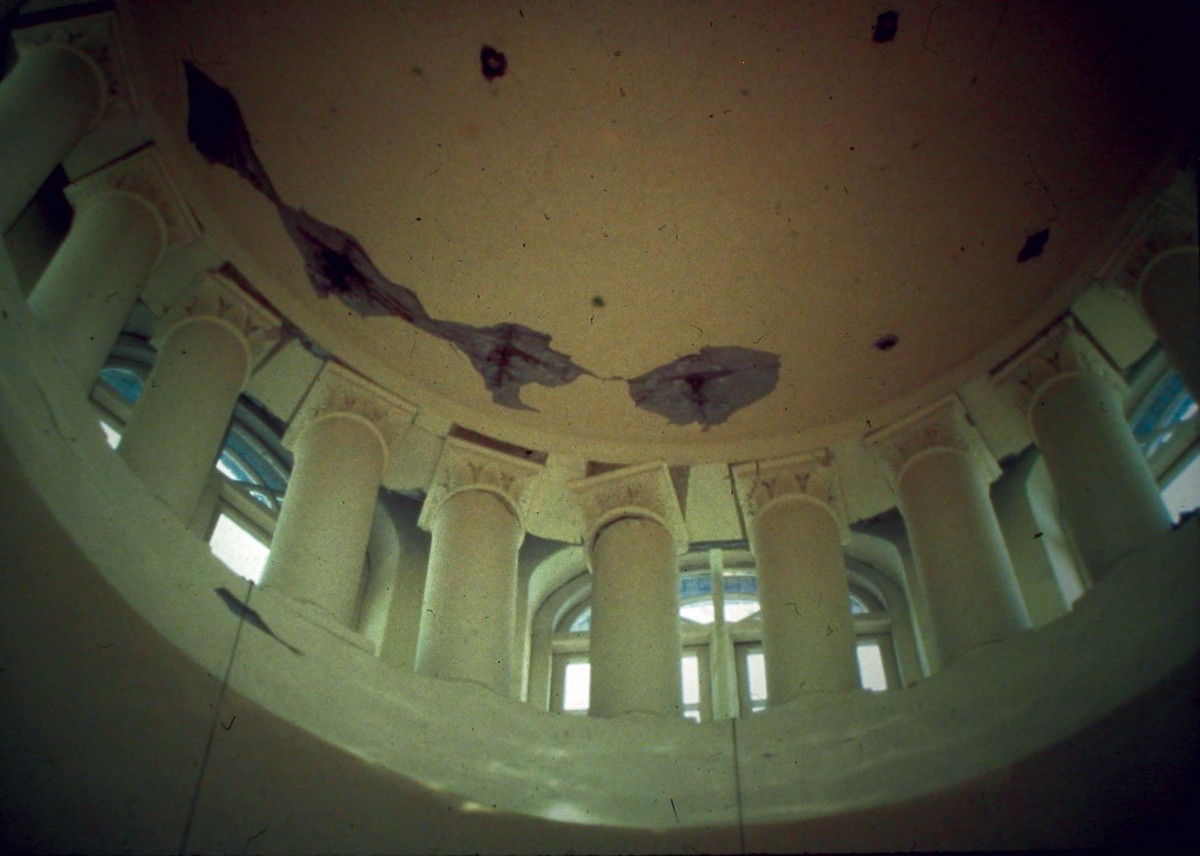
Figure 8: The rotunda ceiling of the Cecil H. Green Library, Stanford University, after the Loma Prieta earthquake of 1989 recorded at 7.1 on the Richter scale and lasting only 20 seconds.
The fire that broke out at the Library of the USSR Academy of Science in Leningrad (now St. Petersburg), Russia, in 1988 can be considered the worst disaster to befall a library, with 400,000 volumes completely destroyed and 160,000 more badly damaged; the estimated total number of volumes affected by the fire is over 3 million. The American press was reporting that hundreds of books were being thrown out of the Library’s windows. This news story prompted Armand Hammer, through the International Foundation for the Survival and Development of Humanity, to arrange for Peter Waters, Sally Buchanan, and myself to go and investigate the situation, but no evidence was found to support the story. A large conference was organized in September 1990 in Leningrad, inviting conservators, chemists, and librarians to give papers on various aspects of the disaster and their subsequent research results.
In the 1980s, the relationship between book conservation and library preservation strengthened again. A number of trained book conservators began serving as professional preservation administrators at the same time that library school programs were beginning to produce librarians trained in the administration of preservation activities. At this point, training in conservation began to shift away from the traditional apprenticeship approach and toward the development of academic training programs. The need for more formal academic training in conservation and preservation was recognized by the late Carolyn Harris and Paul Banks. Over the course of many months, these two organized and planned what was to become the Conservation/Preservation program at Columbia University. Beginning in 1981, the program was offered under the auspices of Columbia's School of Library Sciences, with the science segment being taught through New York University’s Institute of Fine Arts and the book conservation courses being taught by Paul Banks and Gary Frost. The conservation portion of the program took three years to complete and was intended to train workbench conservators, who would receive a Master of Science in Library Sciences degree along with an advanced certificate in Library Conservation. The preservation portion of the program took also three years to complete, culminating with a Master of Science in Library Sciences degree as well as an advanced certificate in Library Preservation Administration. In 1992 the Columbia University Conservation/Preservation program was relocated to the University of Texas at Austin under the leadership of Ellen Cunningham-Kruppa.
Preservation programs themselves were being developed at major research libraries, with both book conservators and preservation librarians acting as administrators. Robert Espinosa and Craig Jensen, two early Library of Congress trainees, and Connie Brooks, who started at the Harry Ransom Humanities Research Center (HRHRC) in Austin, TX, were two trained book conservators who headed up these programs. Until her recent retirement, Connie was head of the preservation program at Stanford. In the 1980s, I myself established and directed the preservation program at the HRHRC.
Occurring hand in hand with these combined efforts were a series of major library preservation events. The first, held in Washington, D.C. in 1983, was called “The Administrative Challenge.” This was followed by two library preservation meetings in 1985, “Implementing Programs” at St. Louis in March and “Fundamental Techniques” at Stanford University in August. “Fundamental Techniques” was attended by 125 participants from all over the country, and many of the Library Preservation presentations were videotaped by a crew of professional filmmakers. Workshops had to be repeated nine times in five days in order to accommodate all the participants. Carolyn Clark Morrow, Jan Merrill Oldham, Robert J. Milevski, Judith Fortson-Jones, Robert J. Espinosa, Lynn Jones, myself, and others served as instructors. The meeting was a wonderful example of conservators and library preservationists working together.
Simultaneously, one of the more important achievements in the field of book and paper conservation happened within the newly titled American Institute for Conservation of Historic and Artistic Works (AIC): the development of the Paper Conservation Catalog. The Catalog first came into being during the 1982 meeting of the Book and Paper Group of the AIC, held in Milwaukee, Wisconsin, and the first edition was published in 1984. The book treatment and structure segment is currently being written, though slowly.
Around 1980, the Guild of Book Workers established its Standards of Excellence meetings, allowing experienced bookbinders and conservators to carry out demonstrations before groups of twenty-five to thirty people. These practical demonstrations proved to be very popular and have been a major influence in the raising of standards in both the bookbinding and book conservation fields during the past thirty years. These sessions brought bookbinders into a forum where experienced book conservators could explain the need for high quality materials and emphasize the important structural needs of a functioning book.
The preservation program at the HRHRC in Austin also conducted yearly courses from 1981–1985 in the Conservation of Archival Materials. These courses were complemented by a detailed set of papers that covered a range of subjects, such as the housing of manuscript collections, different boxing configurations, paper mending, paper treatments, and a detailed paper on inks used in documents and manuscripts written by Jim Stroud. This latter article should be required reading for conservators treating manuscripts. These sessions became a wonderful milieu for conservators, preservationists, administrators, and librarians.
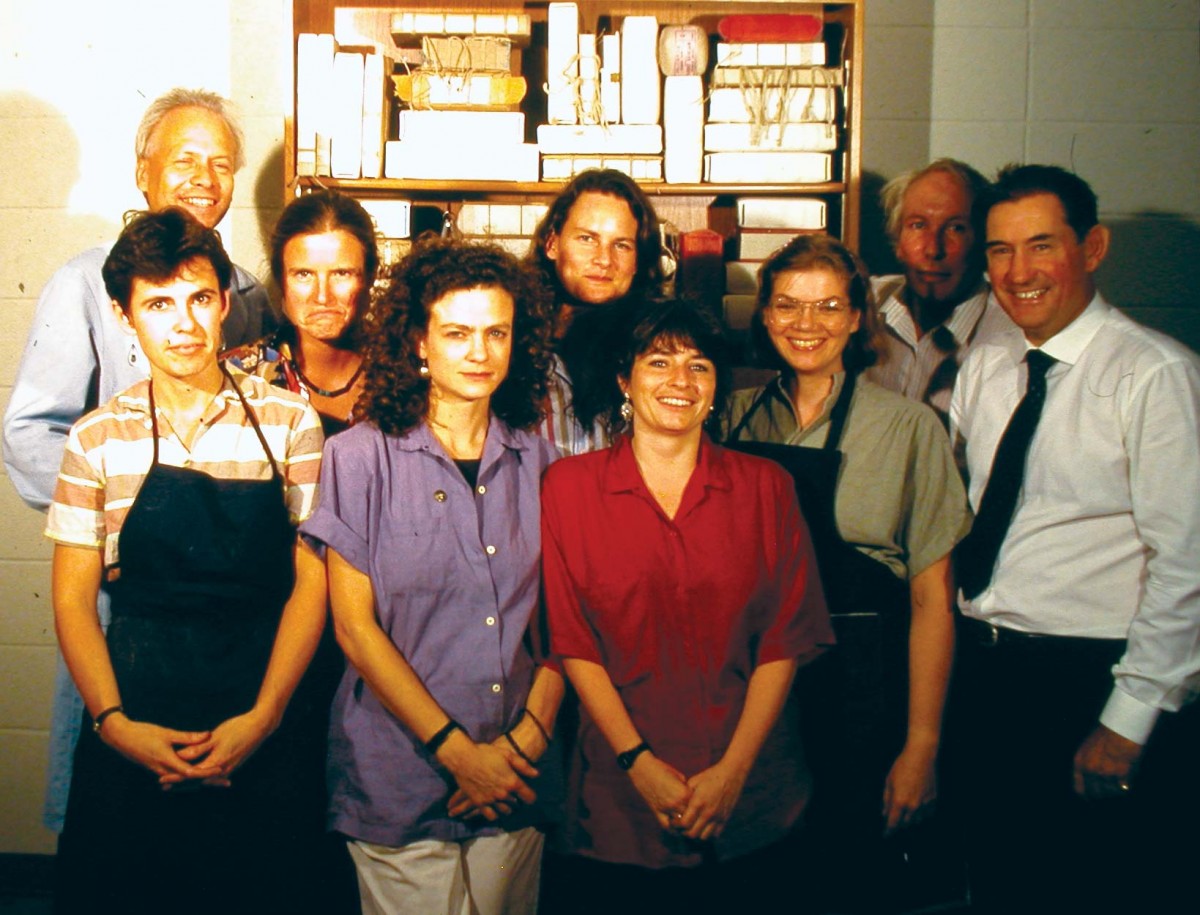
Figure 10: The first group of conservators who attended the Institute of Fine Binding and Conservation conducted by Tony Cains.
A later development at the HRHRC was the establishment of the Institute for Fine Binding and Book Conservation, which many of today’s leading practitioners attended; Tony Cains and Jim Brockman were two of the instructors. One cannot forget the wonderful conference “Bookbinding 2000” at the Rochester Institute of Technology, celebrating the installation of the Bernard Middleton collection of books on bookbinding in the Wallace Library. Over 400 attendees came from many parts of the world for this event. The conference established a level of excellence in presenting lectures and demonstrations that will be hard to exceed.
In addition to the growth of the book conservation field in major research libraries, there was the development of nonprofit regional centers, like NEDCC and the Center for the Conservation of Art and Historic Artifacts (CCAHA), which offer high quality conservation work in art on paper, books, and photographs. The Book and Paper Group of AIC also had a membership growth spurt. Over 800 of the almost 3000 AIC members belong to it, making it the largest specialty group in AIC.
The seventies and eighties also saw the publication of a number of major books on the subject of conservation of library materials. A list of some notable texts follows below.
Programs of mass deacidification, microfilming, scanning, off-site storage, and phased preservation and disaster recovery workshops are now part of our common lexicon. Dick Smith was a major pioneer in developing systems for mass deacidification of bound books throughout the 1970s and ‘80s. The Bookkeeper® system of mass deacidification from Preservation Technologies is now the accepted method and is used throughout the field. Exhibition standards for rare books have been raised to new levels, especially with regard to how long an exhibition is to last, the control of light levels, and the construction of cradles to safeguard the openability of books. Facsimile reproduction in exhibition settings is now considered a possibility for more fragile items and fugitive media. Scanning and digitizing of bound and unbound books is now common. Minimal intervention is practiced by conservators whenever possible. Overall, these thirty years have seen a remarkable growth in the conservation of books within the United States, although formal training programs in book conservation are still much less common than those in other areas of conservation specialties.
I would like to close with two quotes. The first quote, from Paul Banks, explains a goal that we all work towards. Paul states that “in making day to day decisions about the conservation treatment of research library collections, the interests of future scholarship can best be served by extrinsic protection, conservative treatment, broad education for conservators, and discussion of conservation policy among conservators, curators, and users.” The second quote, from Peter Waters, reveals much of the reason why we all work towards this goal. When reminiscing about her husband, Sheila remembers Peter saying that “Florence had given him such a wider experience that what a waste it would be if he just dropped all that and went back to producing pretty bindings.” Let us make this conference another step towards confirming that goal.
Acknowledgments
I would like to thank several people for their assistance in developing this talk, including Ms. Adrienne Bell for her editorial assistance, Mr. Dan Boulden for his digital imaging expertise, and Mr. Michael K. Lee for his knowledge of PowerPoint.
References
Clapp, Anne F. 1974. Curatorial Care of Works of Art on Paper. Oberlin, OH: Intermuseum Laboratory. Republished 1987 by Lyons Press.
Diehl, Edith. 1946. Bookbinding, its Background and Technique. New York: Rinehart.
Horton, Carolyn. 1967. Cleaning and Preserving Bindings and Related Materials. Chicago: Library Technology Program, American Library Association.
Middleton, Bernard. 1963. A History of English Craft Bookbinding Technique. New York and London: Hafner Publishing Co.
Morrow, Carolyn Clark, with Gay Walker. 1983. The Preservation Challenge: A Guide to Preserving Library Materials. White Plains, NY: Knowledge Industry Publications.
Ritzenthaler, Mary Lynn Ritzenthaler. 1983. Archives and Manuscripts: Conservation, a Manual on Physical Care and Management. Chicago: Society of American Archivists.
Roberts, Matt T., and Don Etherington. 1982. Bookbinding and the Conservation of Books. Washington DC: Library of Congress. Available online at http://cool.conservation-us.org/don/don.html.
Swartzburg, Susan G. 1980. Preserving Library Materials: A Manual. Metuchen, NJ, and London: Scarecrow.
Waters, Peter. 1975. Procedures for Salvage of Water-Damaged Library Materials. Washington DC: Library of Congress.
